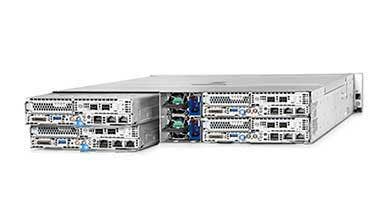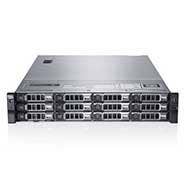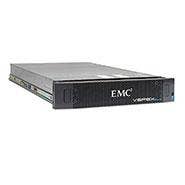VMware EVO Channel Not Seeing It, But Expects Changes At VMworld

EVO:RAIL, VMware's answer to the growing move toward hyper-converged infrastructure, has in the year since it was unveiled gotten off to a rocky start.
Not only has VMware's top technology partner dropped EVO:RAIL from its product line card, but also many VMware solution providers say they are hard-pressed to find hyper-converged infrastructure appliances based on the software stack.
However, that may be changing, as VMware is expected to use its VMworld conference later this month to update the EVO:RAIL software stack with enhancements that will help overcome many of the objections channel partners found with the initial version of the solution.
[Related: HP Intros New StoreVirtual-Based Hyper-Converged Infrastructure Appliance]
Channel sources told CRN that VMware is likely to unveil support for its Virtual SAN, or VSAN, version 6.0, which is a major upgrade from the VSAN version 5.x currently used in EVO:RAIL.
VMware declined to comment on any planned upgrade of the EVO:RAIL platform. However, a VMware spokesperson told CRN via email that the company has previously stated that it expects to update VMware EVO:RAIL in the second half of this year.
VMware officially rolled out its EVO:RAIL technology at last year's VMworld conference after teasing the IT industry with snippets of information about "MARVIN," which was VMware's internal code word for what eventually became EVO:RAIL. MARVIN was short for "Modular Automated Rackable Virtual Infrastructure Node."
EVO:RAIL combines compute, networking, storage and management capabilities in a software stack that is packaged with x86 server hardware from VMware’s OEM partners.
VMware originally signed up nine hardware vendors as QEPs, or Qualified EVO:RAIL Partners: Hewlett-Packard, Dell, EMC, Hitachi Data Systems, Supermicro, NetApp, Fujitsu, Japan-based Net One Systems and China-based Inspur.
However, HP last month dropped its version of the EVO:RAIL appliance, leaving VMware with eight partners. The VMware spokesperson said the remaining eight QEPs are shipping solutions based on the software.
An executive from one of the eight QEPs told CRN on condition of anonymity that it was unfortunate that EVO:RAIL was released to the market so late compared with many other hyper-converged infrastructure solutions.
"The technology is changing fast, and this is becoming a crowded market," the executive told CRN. "Vendors need to rise above the crowd."
Both HP and VMware declined to discuss the reason for the change in HP's EVO:RAIL relationship, although both vendors did confirm the news.
Rob Strechay, HP's director of product marketing and management for software-defined storage and hyper-converged infrastructure, told CRN to ask VMware about the reason for the break.
However, when pressed on the issue, Strechay said the reason is related to the great success HP has had selling a competitive hyper-converged infrastructure solution based on HP's StoreVirtual technology.
Strechay also declined to discuss whether HP had sold any EVO:RAIL-based appliances. "We can't talk about [EVO:RAIL] revenue or customers," he said.
The VMware spokesperson told CRN via email that VMware EVO:RAIL continues to see momentum in just its third quarter in the market, with eight Qualified EVO:RAIL Partners delivering solutions.
HP's dropping of EVO:RAIL likely stems from a problem with EVO:RAIL in general, said Dan Molina, chief technology officer of Nth Generation Computing, a San Diego-based solution provider and HP partner.
"EVO:RAIL was released a little too soon," Molina told CRN. "It was based on VSAN 1.x, later named VSAN 5.x. That release was not ready for prime time. It wasn't positioned for business-critical applications. As a solution provider, I'm not ready to talk about EVO:RAIL for business-critical applications."
The EVO:RAIL software stack was also limited in terms of the number of disks it supports per node, Molina said. Furthermore, for four nodes, a complete EVO:RAIL solution lists for $250,000. "It's a hard number to chew for customers new to the solution," he said.
There is an opportunity for EVO:RAIL down the line, but only after it gets more flexibility, Molina said.

For now, Molina said, he is a big fan of HP's StoreVirtual-based hyper-converged infrastructure solution.
While EVO:RAIL is focused on VMware hypervisor-based infrastructures, the HP StoreVirtual solution supports VMware and Microsoft Hyper-V, and will likely support KVM in the future, Molina said. It also supports cloud management with OpenStack, and is ready for use with Microsoft System Center.
Another HP solution provider, who requested anonymity, said HP likely dropped its EVO:RAIL offering because it probably did not want VMware to control the sales cycle.
"HP would probably rather focus on its StoreVirtual appliances," the solution provider told CRN. "HP feels it can be more flexible with its own offering, and get more account control."
While HP has come out and admitted it no longer supports EVO:RAIL, other vendors, including VMware itself, are more tight-lipped about EVO:RAIL sales.
The VMware spokesperson told CRN via email that all of VMware's QEPs are shipping VMware EVO:RAIL, although the spokesperson declined to provide additional details.
A Dell spokesperson was unable to provide sales information about that company's EVO:RAIL appliance sales other than to say that Dell has sold some of the appliances, and a couple of key Dell partners were unaware of any being sold. The Dell EVO:RAIL appliance is based on the company's PowerEdge C6320 servers.
Paul Clifford, president of Davenport Group, a St. Paul, Minn.-based solution provider and longtime Dell channel partner, said he has never heard of a Dell EVO:RAIL appliance being sold.
"I see it as packaging," Clifford told CRN. "It's an easy thing to sell for a direct salesperson who's not that technical. It's the same for any manufacturer. But that doesn't mean it's the right product for customers. An SKU with a package doesn't really fix a customer's needs."
At least EVO:RAIL is helping generate interest in hyper-converged infrastructure in general, Clifford said. "It raises awareness, and gets people talking," he said.
Dell's EVO:RAIL introduction was met with suspicion from customers who noted that VMware is owned by Dell arch-rival EMC, said Michael Tanenhaus, principal at Mavenspire, an Annapolis, Md.-based solution provider and long-term Dell channel partner.
"People wonder what EMC will make VMware do with it," Tanenhaus told CRN. "Also, it's not hypervisor-agnostic."
The big question is when version 2 will be available, Tanenhaus said. "And where are the service packs?" he said. "Nutanix has already released multiple generations of its solution. They've gone through all the issues."
NetApp, which in December unveiled its version of EVO:RAIL, was unable to provide information on sales of the appliances. However, NetApp CEO George Kurin said during Wednesday's first fiscal quarter 2016 financial analyst call that NetApp has recently started shipping it.
John Murphy, executive vice president at Advanced Systems Group, a Denver-based solution provider and NetApp channel partner, said that while NetApp is ramping up promotion and training for its EVO:RAIL appliance, the solution will face challenges.
"All the storage guys are trying to sell value-add on top of the arrays, the things that get done on top of the storage part," Murphy told CRN. "But EVO:RAIL takes all that away. VMware dictates the solution. You can wrap vCenter and other VMware components around it. But your own software differentiators aren't valued."
Murphy said VSAN is still a relatively new solution to the market, with a lot of testing being done but not much in terms of sales.
"If I were a company like Supermicro, EVO:RAIL might make a lot of sense," he said. "But if customers have highly tuned platforms with lots of software, I don't know if they would buy EVO:RAIL just to be at the same level as everybody else."
Actually, Supermicro has embraced the EVO:RAIL platform, and indeed was the first out the gate with the solution, said Sim Upadhyayula, director of solutions enablement for the San Jose, Calif.-based system builder.
The company already has two SKUs, including what Upadhyayula called a "maxed out configuration," and has sold them to financial, health-care and biogenetic research organizations, he told CRN.

"Customers like the simplicity of the solution, but they want more customization in terms of memory and capacity," Upadhyayula said. "We are committed to increasing our market for EVO:RAIL and to evangelizing the market."
Another EVO:RAIL QEP that has seen success with EVO:RAIL is EMC, which is the majority stakeholder in VMware.
Chad Dunn, senior director of VSPEX product operations at Hopkinton, Mass.-based EMC, said VSPEX Blue, which is EMC's version of EVO:RAIL, is "finding its legs" in the market.
"When you create a program like EVO:RAIL, where you define a common hardware, it can be difficult," Dunn told CRN. "But VMware in June introduced new configurations with more flexibility in terms of memory, processor and storage, and that was important."
Dunn said it is also important that EVO:RAIL QEPs find a way to differentiate their offerings.
"If you take stock software to market, it can be difficult," he said. "EMC provides VSPEX Blue Manager for managing the hardware, the VSPEX Blue Market storefront for software, EMC RecoverPoint, CloudArray for bursting to the cloud, integration with Data Domain as a backup target, and EMC remote support."
The EMC VSPEX Blue is sold exclusively via channel partners, and has done well in the U.S. federal and defense markets, Dunn said. This includes mainly smaller organizations, although he said he expects sales to start moving more toward the enterprise edge market.
Dunn said he is not surprised that rival HP dropped its EVO:RAIL solution, because it has its own competitive offering.
"If they sell their own intellectual property vs. OEM technology from VMware, it's more profitable for them," he said. "And they have more control over new hardware. There's no need to follow VMware's hardware specs. And Dell has options with rival Nutanix's technology."
EMC, on the other hand, is all-in on EVO:RAIL, Dunn said.
VSPEX Blue is introducing customers to the EVO:RAIL concepts of hyper-converged infrastructure, but most of those customers are waiting for EMC's real converged infrastructure initiatives, said Jamie Shepard, regional and health systems senior vice president at Lumenate, a Dallas-based solution provider and EMC channel partner, via email to CRN.
This is resulting in lower-than-expected customer adoption of EVO:RAIL, Shepard wrote.
"[VSPEX Blue] was a quick first step into EMC's strong Converged Infrastructure evolution. [EMC] needed to begin showing customers that they are serious about hyper converged and went down the Blue route as a defined architecture for EMC's hyper converged. They are moving to a truly commoditized software-defined stack soon," he wrote.
EVO:RAIL itself is not fully being adopted, either, Shepard wrote. "Nutanix, SimpliVity are still leading, and the advancements of all-flash arrays has pretty much solidified the future," he wrote.
Colin Henry, director of business development at the sales solution center at Pomeroy IT Solutions, a Hebron, Ky.-based solution provider and EMC channel partner, said his company has sold a few EMC VSPEX Blue solutions, and has more than 10 customer deals in the pipelines.
Henry told CRN the ramp-up hasn't been as quickly as hoped, but it is understandable, as EMC just released its VSPEX Blue in March.
Pomeroy focuses on managed services, and EVO:RAIL, like offerings from rivals such as Nutanix and SimpliVity, provides an option to work with major OEM partners, Henry said.
That is important as they address different markets. While Nutanix and SimpliVity address requirements for 500 virtual desktops, the EVO:RAIL's sweet spot is more in the SMB market, he said.
"We see it as a good remote-office and branch-office play," he said. "Customers there are looking for a simple, standardized infrastructure solution. Something we can use to deliver services to clients."